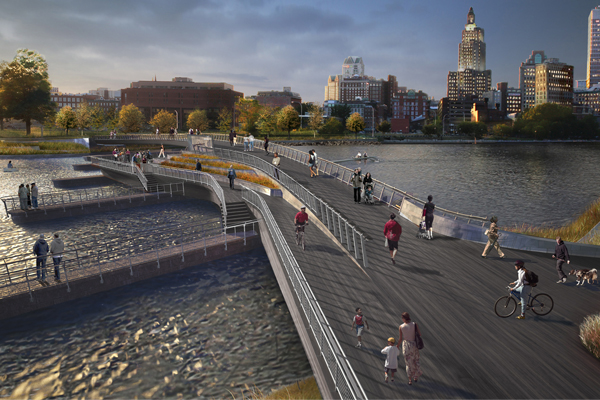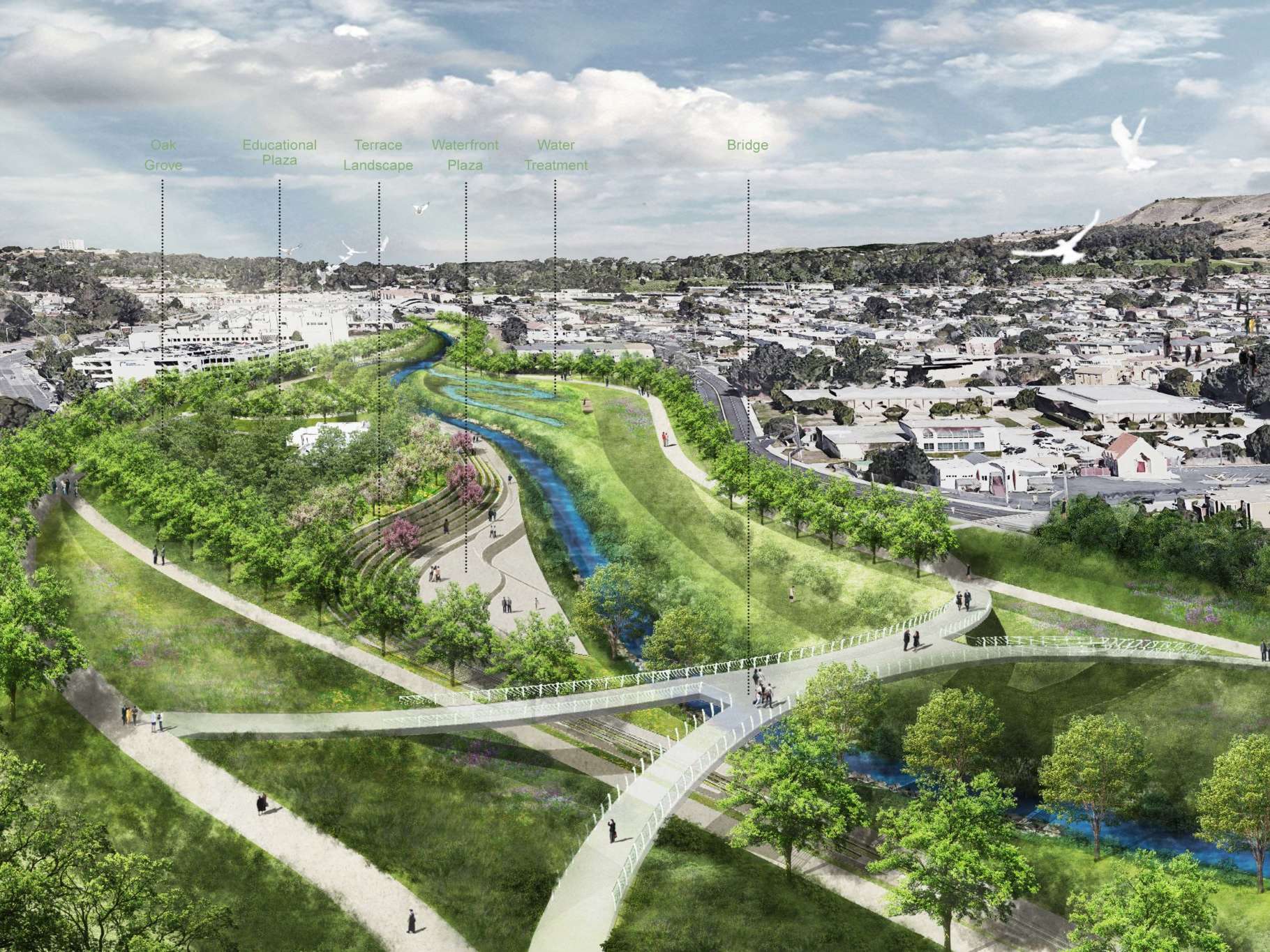Bridge Park as Community Gateway
A multi-million dollar elevated park spanning the Anacostia River is planned to link neighborhoods in the District of Columbia. This project will use existing infrastructure to support a new landmark called the 11th Street Bridge Park.
Washington DC, our Nation’s Capital, is a city of around 650,000 people, 76,000 of whom live within two miles of this project. This city is located at the convergence of two large rivers: the Anacostia and the Potomac. The Potomac River serves as the southwestern border, with the Anacostia River cutting the District in two. Bridges over the Anacostia River have existed for over two hundred years. At this location six bridges have existed, but none were dedicated to pedestrians.
Creating pedestrian bridges is not revolutionary. In fact, pedestrian bridges are being planned all over the country, like the South Side Lake Shore Drive pedestrian bridges in Chicago. This project will connect the Bronzeville neighborhood to the lakefront, linking this community with its adjacent waterfront.
The plan for the 11th Street Bridge Park is not just another pedestrian bridge, but an elevated park and more. The plan is to create a larger relative of the existing Potomac River Waterfront Park, located in Maryland, which spans I-95, the busiest interstate in the United States. This park’s design was led by Johnson, Mirmiran & Thompson, Inc. (JMT) and was completed in June 2009. More information about the park’s design can be found on JMT’s Riverfront Park Design webpage. The Riverfront Park is similar to the 11th Street Bridge Park in that they will both be elevated and connect pedestrian networks, but that is where their similarities end.
The 11th Street Bridge Park will be more like inFORM studio’s planned design for the Providence River Pedestrian Bridge in Rhode Island, which will also use existing infrastructure for structural support. More information about the Providence Pedestrian Bridge can be found by looking at their public meeting presentation. While both projects will use existing piers, the project in the District will be much larger and offer more programming.
The winning entry for the 11th Street Bridge Park was submitted by architecture firm OMA (New York) and landscape firm OLIN (Philadelphia). The 11th Street Bridge Park will be the first of its kind. This landscape will be a vibrant destination park which reuses aged infrastructure to connect the Main Street Mixed Use Corridor of the historic Anacostia community with the Capitol Riverfront neighborhood and Capitol Hill. This landmark will bring the citizens of Washington together, and to the edges of the Anacostia River. The project will include an environmental education center, boat launch, café, gallery, performance space, play area, and will serve as a pedestrian bridge. When complete, the bridge park will span the length of three football fields.
The Bridge Park Impact Area will benefit from the creation of a world renowned destination, but will also have to manage the impact of this project on the real estate market. Producing new amenities also produces new interest from outside investors. To proactively address issues of displacement an Equitable Development Task Force has been created, consisting of community leaders and stakeholders from both sides of the Anacostia River. This team has participated in past and ongoing meetings/workshops towards the development of a three-pronged approach to deal with the issues of Workforce Development, Small Business Enterprise, and Housing.
The first strategy is focused on workforce development through the creation of the Community Workforce Agreement (CWA). This legal document is between contractors, local businesses, and residents who will give employment priority to neighboring residents and “harder-to-employ District residents.” Construction workers will be given a living wage and be taught valuable skills. When construction is complete, local residents will also be given priority employment at the Bridge Park.
The second strategy works to encourage new small business enterprises particularly in the Anacostia community. Some of the investments will come in the form of mentorship, partnership, and training. Consideration is also being given to connect the shops on the bridge, to the shops within the immediate neighborhoods. Local businesses will also benefit from enhanced walkability within their commercial corridors.
The last strategy focuses on housing and involves measures to keep existing affordable housing in place and to promote future affordable housing in this area of Washington. Three approaches are in place to achieve this goal. The first approach is to educate the local community about housing opportunities near the project site. The second approach is to keep existing affordable housing, and to build new affordable housing, in the area. The final approach is to work with policy makers, and those within the housing community, to create new affordable housing within the Bridge Park Impact Area. This information is included in the Equitable Development Plan Timeline, which also estimates a completion date of summer 2019, and discussed in a recent in-depth article from The Washington Post.
With the Anacostia Waterfront Initiative able to invest ten billion dollars over the next thirty years into revitalizing this waterfront community, this project is sure to be one of several interventions making Washington a more sustainable waterfront city. For more information about this project, find them on Facebook.
by Christopher Myers, Associate ASLA, LEED Green Associate, and Certified Arborist. He studied architecture at the University of Colorado and has an MLA from the University of Maryland. He lives in Hyattsville, Maryland.






